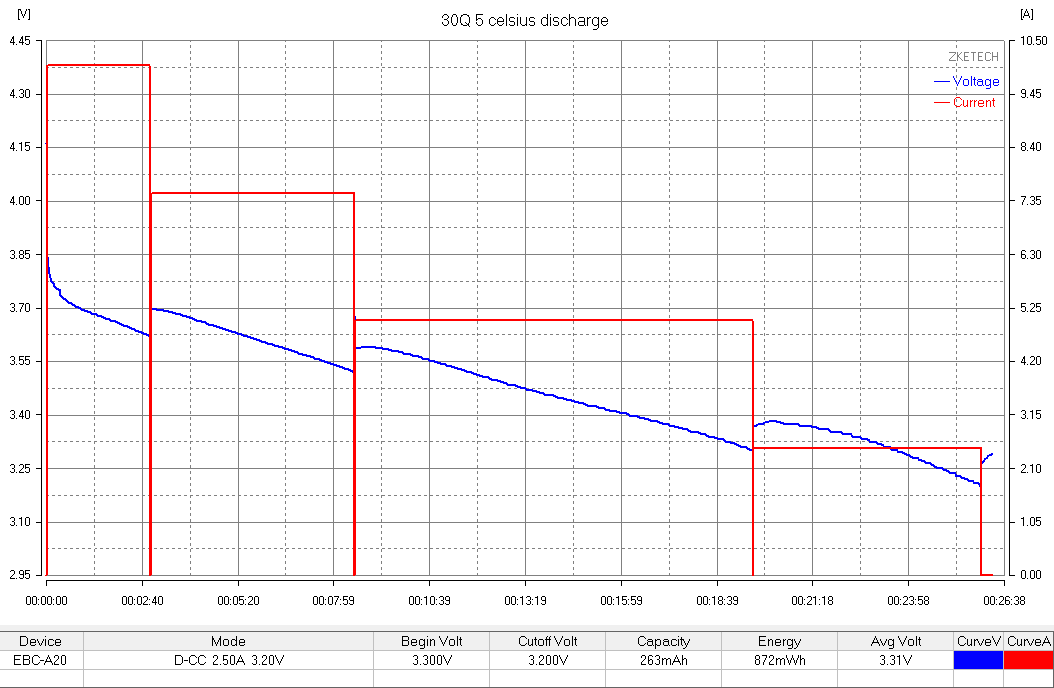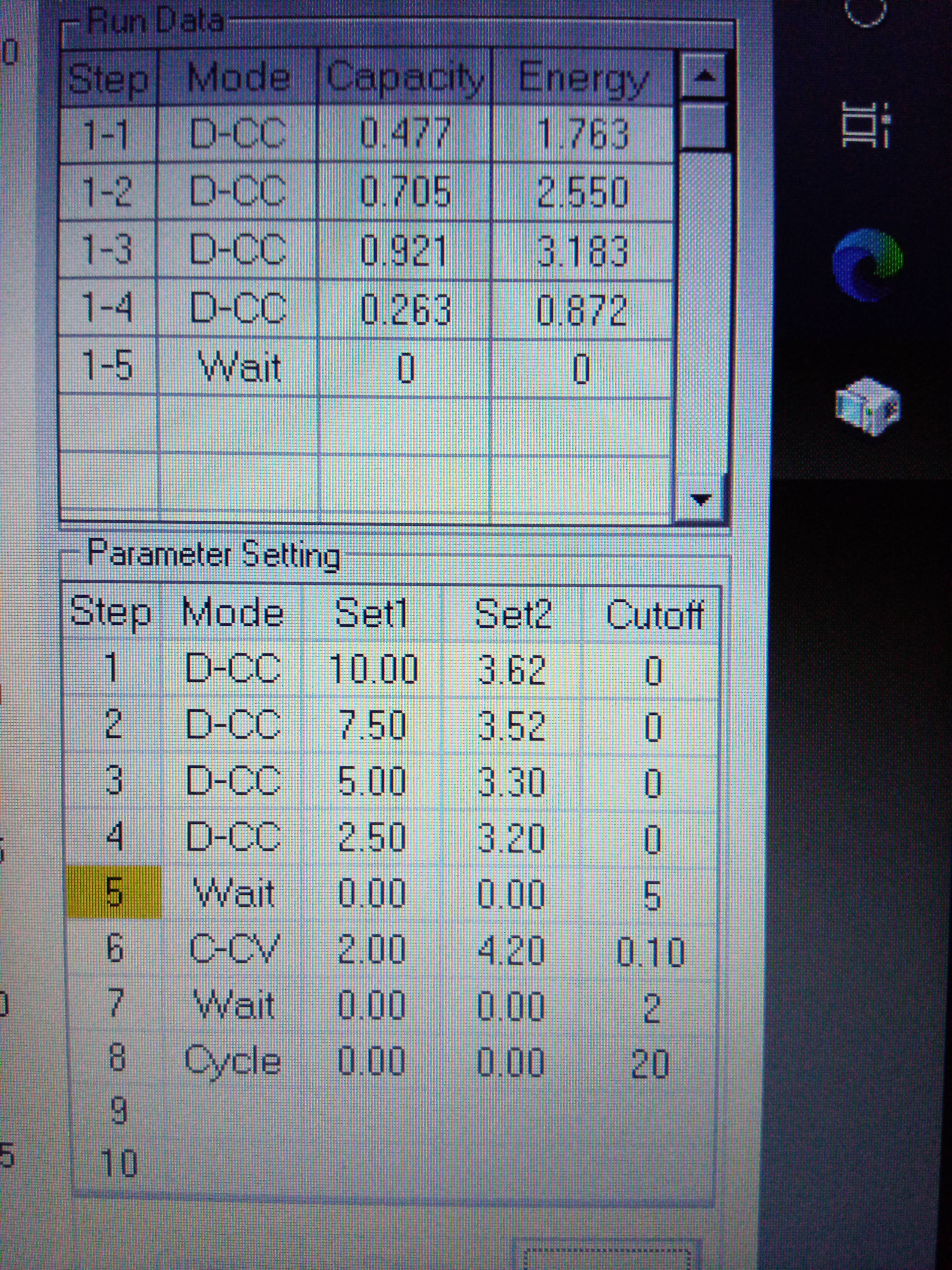eBikeaholic
10 mW
Please help clarify the main cause of premature failure for a potted 52v 12ah (Samsung 30Q) eBike battery pack.
It's been having trouble balancing but with some patience it can get up to 58.6v, then rests at 58.4v the next morning (sometimes dips closer to 56-57v after sitting for a day or two). All seems fine until I ride it: gets about half the usual range (under 6 miles instead of 11 or 12) on the same usual routes/conditions... even when I stay in a low gear and mostly use my legs, goes about 5 mph slower top speed (35mph instead of 40mph), and the resting voltage quickly drops to around 55v after the first few minutes of riding.
Ultimately it feels like the cells are having a harder time handling the current draw resulting in a higher voltage sag. This would indicate damaged cells, right?
I sent this explanation to the battery seller (who is also the manufacturer) asking for some clarification on what could be failing. They asked me to fully discharge (hit the lvc) the pack then send a video of it being used under load until it hit the lvc again. The video shows that the lvc is tripped at 49.0v (via the DPC-18 eBike display). The resting voltage then reads 54.0v via multimeter at the charging port. They then kicked it up to a manager who just offered a discount for a new pack but no explanation. I again asked for clarification but all they replied is "A very small percentage of the BMS can fail in this way so it is probably nothing you did."
The pack is about 1 year old and has 600 somewhat abusive road miles. It's powering a DIY 1500w Bafang Ultra (30A stock controller) prototype commuter bike with 58T/17T Nexus 3 IGH. Most of the miles have been for suburban car replacement using pedal assist in 2nd gear (6.1 gain ratio) pushing 750-1000w with occasional bursts of 1500w to maintain the flow of traffic. The controller is programmed to give full power when cruising and I'm often towing my toddler and dog or 200 lbs of groceries in a bike trailer through a somewhat hilly neighborhood.
The main purpose of this project is to test the durability of the 30Q cells which I was hoping would stand up to the abuse. I always fully charged then intentionally fully discharged the pack a handful of times during range tests which leads me to believe I've probably damaged some of the cells. It was always able to get back to balance until the last time it accidentally (and prematurely) hit the lvc while towing my toddler in his trailer up a hill at the end of a short casual ride.
I obviously shouldn't have used a potted pack for this experiment (bc I can't get in there to test anything) and 12ah is not enough capacity to handle the high discharge (and high voltage sag) demanded by this setup.
I need to decide how to prevent this from happening on the next prototype eBike build. I was considering buying two of these 12ah potted packs to run parallel - hoping that the higher capacity would better handle the higher current draw... and obviously not intentionally hitting the lvc any more. If it's BMS failure though, potted packs seem like a bad idea for these experiments.
Any ideas on how to confirm if this issue is stemming from the BMS or cells?
If it's BMS failure, does that mean the BMS malfunction simply doesn't allow it to balance all the cells?
If it's damaged cells, which factor do you think contributes more: high bike gearing (6.1 gain ratio), high current draw (low capacity battery continuously running at full power), hitting the lvc too often, or towing a heavy cargo load (200 lb grocery trailer up hills)?
It's been having trouble balancing but with some patience it can get up to 58.6v, then rests at 58.4v the next morning (sometimes dips closer to 56-57v after sitting for a day or two). All seems fine until I ride it: gets about half the usual range (under 6 miles instead of 11 or 12) on the same usual routes/conditions... even when I stay in a low gear and mostly use my legs, goes about 5 mph slower top speed (35mph instead of 40mph), and the resting voltage quickly drops to around 55v after the first few minutes of riding.
Ultimately it feels like the cells are having a harder time handling the current draw resulting in a higher voltage sag. This would indicate damaged cells, right?
I sent this explanation to the battery seller (who is also the manufacturer) asking for some clarification on what could be failing. They asked me to fully discharge (hit the lvc) the pack then send a video of it being used under load until it hit the lvc again. The video shows that the lvc is tripped at 49.0v (via the DPC-18 eBike display). The resting voltage then reads 54.0v via multimeter at the charging port. They then kicked it up to a manager who just offered a discount for a new pack but no explanation. I again asked for clarification but all they replied is "A very small percentage of the BMS can fail in this way so it is probably nothing you did."
The pack is about 1 year old and has 600 somewhat abusive road miles. It's powering a DIY 1500w Bafang Ultra (30A stock controller) prototype commuter bike with 58T/17T Nexus 3 IGH. Most of the miles have been for suburban car replacement using pedal assist in 2nd gear (6.1 gain ratio) pushing 750-1000w with occasional bursts of 1500w to maintain the flow of traffic. The controller is programmed to give full power when cruising and I'm often towing my toddler and dog or 200 lbs of groceries in a bike trailer through a somewhat hilly neighborhood.
The main purpose of this project is to test the durability of the 30Q cells which I was hoping would stand up to the abuse. I always fully charged then intentionally fully discharged the pack a handful of times during range tests which leads me to believe I've probably damaged some of the cells. It was always able to get back to balance until the last time it accidentally (and prematurely) hit the lvc while towing my toddler in his trailer up a hill at the end of a short casual ride.
I obviously shouldn't have used a potted pack for this experiment (bc I can't get in there to test anything) and 12ah is not enough capacity to handle the high discharge (and high voltage sag) demanded by this setup.
I need to decide how to prevent this from happening on the next prototype eBike build. I was considering buying two of these 12ah potted packs to run parallel - hoping that the higher capacity would better handle the higher current draw... and obviously not intentionally hitting the lvc any more. If it's BMS failure though, potted packs seem like a bad idea for these experiments.
Any ideas on how to confirm if this issue is stemming from the BMS or cells?
If it's BMS failure, does that mean the BMS malfunction simply doesn't allow it to balance all the cells?
If it's damaged cells, which factor do you think contributes more: high bike gearing (6.1 gain ratio), high current draw (low capacity battery continuously running at full power), hitting the lvc too often, or towing a heavy cargo load (200 lb grocery trailer up hills)?



